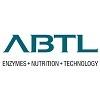Explore all the information on
Poultry gut health
The efficient conversion of feed into its basic components for optimal nutrient absorption is vital for both broiler and broiler breeder production and welfare. Gut health, an intricate and complex area combining nutrition, microbiology, immunology and physiology, has a key role to play. When gut health is compromised, digestion and nutrient absorption are affected which, in turn, can have a detrimental effect on feed conversion leading to economic loss and a greater susceptibility to disease. In addition, recent changes in legislation on the use of antimicrobials, differing feed requirements and more efficient birds highlight the need for a better understanding of gut function and gut health.
Plants extracts (PE) have shown promising effects on performance and intestinal health in broilers. Their potential as antimicrobial (AM) alternatives has been studied for years (Adhikari et al., 2020). A feeding study was conducted to examine the effect of a micro-encapsulated product composed of eugenol and garlic tincture on growth performance, mortality, intestinal lesions, jejunal gene expressions, and histology in broilers during the onset of necrotic enteritis (NE). A total of 960...
Comments : 0
Recommendations: 0
Nutrients in most feed ingredients are present in a complex matrix. Therefore, it is anticipated that feed enzymes like protease can exert a wide influence on nutrient digestibility beyond their targeted substrates (Cowieson and Bedford, 2009). For instance, the disruption of protein matrix surrounding starch granules due to protease supplementation had been shown to improve energy digestibility in some cereal grains (McAllister et al., 1993). It is hypothesised that protease may benefit...
Comments : 0
Recommendations: 1


A Natural Choice for Growth Enhancement in Farm Animals - 3 ESSDENDIS
Suggested link
I. INTRODUCTION Coccidiosis is caused by Apicomplexa protozoa of the family Eimeriidae. In poultry, most species responsible for coccidiosis belong to the genus Eimeria, which infect various sites in the intestine. Coccidiosis is recognized as one of the most common and economically important diseases in broilers, with an estimated $16,7 billion in losses globally per year. The average cost of coccidiosis per chicken produced is estimated to be $0.21 (Blake et al.,...
Comments : 1
Recommendations: 0
I. INTRODUCTION Antibiotic stewardship and the judicious use of antibiotics as treatment for specific disease occurrences, rather than using sub-therapeutic doses for growth promotion, are well established concepts within the Australian poultry industry (Alfirevich, 2018). Intensive production systems however, are prone to increased stressors and large scale production does not always meet the individual needs of each bird. Optimising production performance within this...
Comments : 0
Recommendations: 1
...
Comments : 0
Recommendations: 0
...
Comments : 0
Recommendations: 1
...
Comments : 0
Recommendations: 1
...
Comments : 1
Recommendations: 2
Prof. dr. F. Van Immerseel, speaks about how poultry producers can improve gut barrier, microbiota, and birds’ resilience
...
Comments : 0
Recommendations: 5
PRO-MaXYL™ is a high-performance and refined enzyme combination to improve the performance of modern poultry diets. PRO-MaXYL is the comprehensive solution for flexible poultry diet formulation
...
Comments : 4
Recommendations: 4
Water-soluble non-starch polysaccharides (NSPs) increase the viscosity of the intestinal content by 3 to 5 folds. By increasing the viscosity of the intestinal content, water-soluble NSPs impair productivity and gut health....
Comments : 1
Recommendations: 0
Dear poultry professional, scientist, veterinarian, nutritionist, and interested colleagues,
It is with great pleasure that we can make the first announcement of the 8th Conference on Poultry Intestinal Health, to be held in the beautiful metropolitan city of Manila, along the eastern shore of Manila Bay in The Philippines from April 17th to 19th, 2024.
The conference chairs have been organizing Poultry Intestinal Health Conferences all over the world, with the most recent...
Comments : 0
Recommendations: 1
Hear what Dr. Hilde Van Meirhaeghe, Poultry Consultant at Vetworks, Belgium, has to say about it...
Comments : 1
Recommendations: 6
INTRODUCTION Necrotic enteritis (NE) is a poultry illness caused by toxin-producing strains of Clostridium perfringens (CP) type A, type C and type G (1). NE is a pathology of global concern, with important consequences for flock productivity and economic viability (2). The total cost of NE outbreaks worldwide has been estimated to be over 2 billion dollars annually (3, 4). NE can present itself as a sudden increase in mortality or simply as a subclinical illness (2). CP is...
Comments : 2
Recommendations: 0
1. Introduction For more than 50 years, antibiotic growth promoters (AGPs) have been used in agricultural animal production as a means to increase growth performance through maintained animal health and improved feed efficiency [1]. During the last decades, global concern about development and transference of antimicrobial resistance from animal to human strains is rising [2]. The benefits of AGPs use in production animals are of ten argued to be outweighed by their negative...
Comments : 0
Recommendations: 0
Poultry meat is a particularly important protein source as broilers have a high feed efficiency and short production cycle compared to other animal products, making it an affordable, nutritious source of animal protein (Marangoni et al., 2015). Therefore, strategies to improve production performance of broilers will require significant research as this is key to future food security. One nutritional strategy to improve sustainability of poultry production systems is improving the efficiency...
Comments : 0
Recommendations: 2


A Natural Choice for Growth Enhancement in Farm Animals - 3 ESSDENDIS
Suggested link
Make your plans now to attend the in-person 2022 Symposium on Gut Health in Production of Food Animals, November 6-9, 2022, at the Hilton St. Louis at the Ballpark in St. Louis, Missouri.
The symposium is now accepting abstract submissions, meeting registrations, and hotel reservations. Register and submit your abstract now to reserve your spot! The deadline to submit abstracts is Friday, September 2.
...
Comments : 0
Recommendations: 0
Introduction The impressive genetic improvement of poultry growth rate has led to a modern bird with a very low feed conversion rate (FCR), high average daily gain (ADG) and low mortality. Unfortunately, this fast growth rate is often directly linked with digestive problems, such as bacterial enteritis (BE) or dysbacteriosis and even necrotic enteritis (NE). These intestinal health problems have significantly increased since the ban on meat and bone meal and the ban of...
Comments : 0
Recommendations: 6








.jpg&w=3840&q=75)






.jpg&w=3840&q=75)



.jpg&w=3840&q=75)

.jpg&w=3840&q=75)














